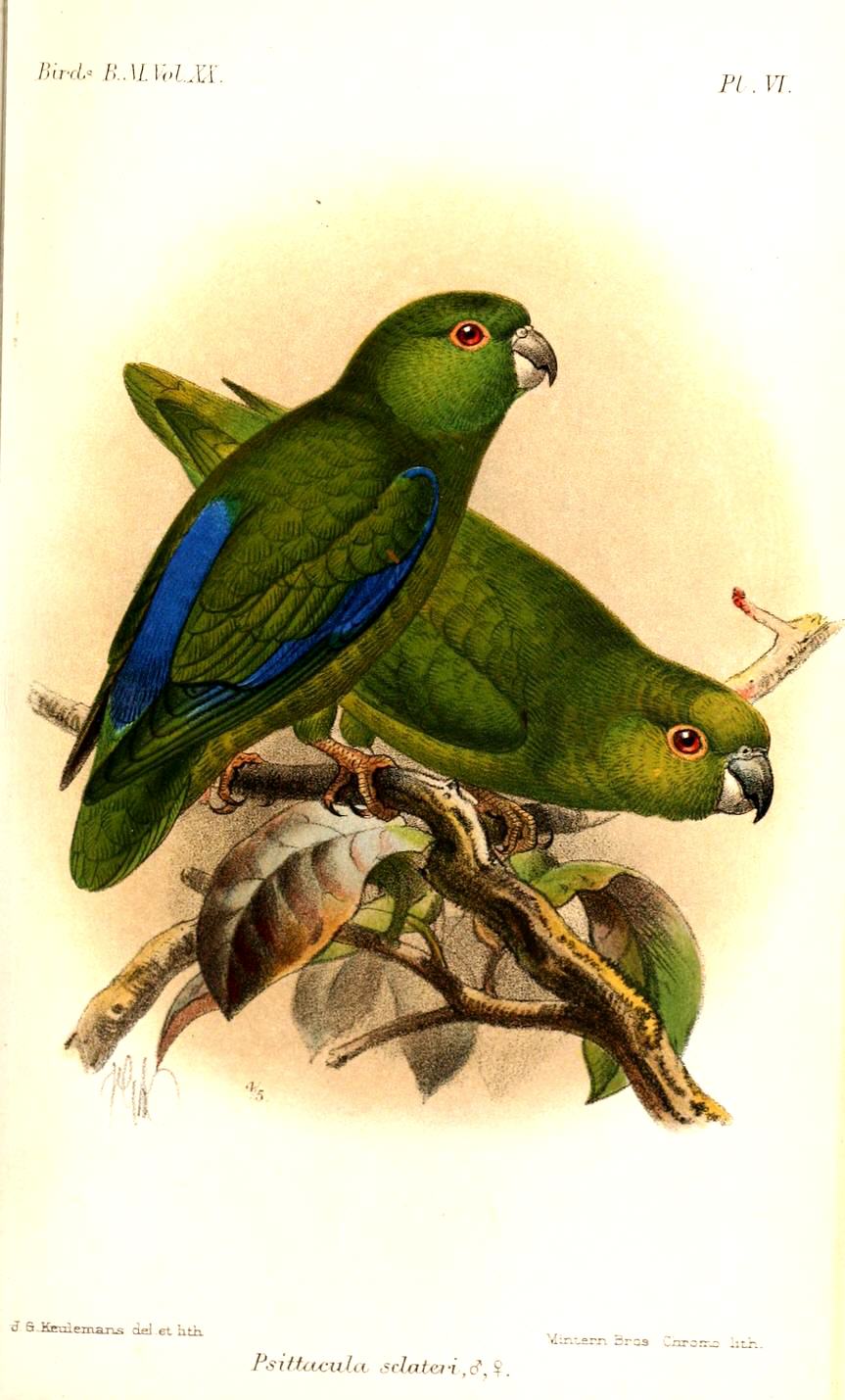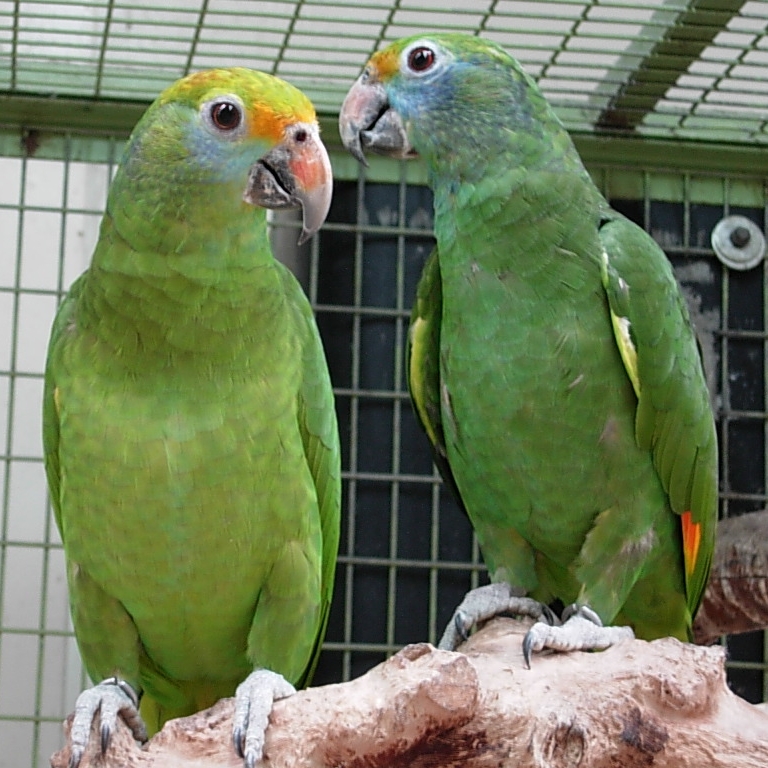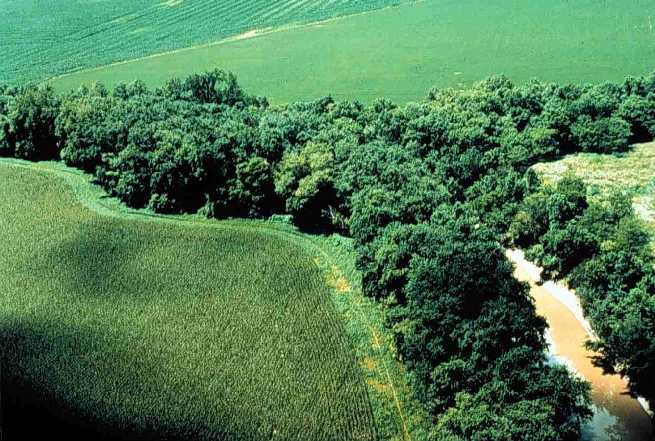|
Dusky-billed Parrotlet
The dusky-billed parrotlet (''Forpus modestus''), also known as Sclater's parrotlet, is a small species of parrot in the family Psittacidae. It is the nominate species (''F. m. modestus''). There is one subspecies: ''Forpus modestus sclateri''. Subspecies Distribution and habitat The dusky-billed parrotlet is found in the Amazon Rainforest in South America, where it is locally fairly common; it also occurs in the Andes and the Amazonian foothills, the Amazon River outlet, and Marajo Island. Dusky-billed parrotlets prefer lowland tropical rainforest edges and clearings, riparian zones, secondary habitats, and savanna. They seem to favor seasonally-flooding forests. They are not found at altitudes higher than above sea level. Conservation According to the IUCN Red List, dusky-billed parrotlets are a species of Least Concern. Their population size is unknown, but is believed to be stable. Threats Unlike many members of the genus ''Forpus'', they are not captured ... [...More Info...] [...Related Items...] OR: [Wikipedia] [Google] [Baidu] |
Alta Floresta
Alta Floresta (Portuguese for "High Forest") is a municipality in Mato Grosso, Brazil Brazil ( pt, Brasil; ), officially the Federative Republic of Brazil (Portuguese: ), is the largest country in both South America and Latin America. At and with over 217 million people, Brazil is the world's fifth-largest country by area .... It is located at around . The municipality is served by Piloto Osvaldo Marques Dias Airport. The municipality contains a small part of the Cristalino State Park, created in 2001. References External links * *Tour Guide to Alta Floresta Municipalities in Mato Grosso {{matoGrosso-geo-stub ... [...More Info...] [...Related Items...] OR: [Wikipedia] [Google] [Baidu] |
Venezuela
Venezuela (; ), officially the Bolivarian Republic of Venezuela ( es, link=no, República Bolivariana de Venezuela), is a country on the northern coast of South America, consisting of a continental landmass and many islands and islets in the Caribbean Sea. It has a territorial extension of , and its population was estimated at 29 million in 2022. The capital and largest urban agglomeration is the city of Caracas. The continental territory is bordered on the north by the Caribbean Sea and the Atlantic Ocean, on the west by Colombia, Brazil on the south, Trinidad and Tobago to the north-east and on the east by Guyana. The Venezuelan government maintains a claim against Guyana to Guayana Esequiba. Venezuela is a federal presidential republic consisting of 23 states, the Capital District and federal dependencies covering Venezuela's offshore islands. Venezuela is among the most urbanized countries in Latin America; the vast majority of Venezuelans live in the cities of ... [...More Info...] [...Related Items...] OR: [Wikipedia] [Google] [Baidu] |
International Parrot Trade
The international trade in parrots is a lucrative enterprise, and forms an important part of the international wildlife trade. As parrots have become increasingly endangered, many countries have placed restrictions on the trade and/or prohibited the trade altogether. Despite the restriction on trade in many countries however, the market still operates both legally and illegally. Approximately 2,600 of the more than 9,600 bird species in existence are subject to trade, FAO. 2011. Trade in Wild Birds and Related Bird Movements in Latin America and the Caribbean' Animal Production and Health Paper No. 166. Rome. and 20% of these species belong to the order Psittaciformes (parrots). In 2009, 3.9% of households in the United States owned birds, which equated to 11,199,000 pet birds in total, and 75% of these belonged to the Psittaciforme order. International trade Top exporters The greatest number of parrots came from Latin American countries (mostly Guyana, Suriname and Argentina ... [...More Info...] [...Related Items...] OR: [Wikipedia] [Google] [Baidu] |
Least-concern Species
A least-concern species is a species that has been categorized by the International Union for Conservation of Nature (IUCN) as evaluated as not being a focus of species conservation because the specific species is still plentiful in the wild. They do not qualify as threatened, near threatened, or (before 2001) conservation dependent. Species cannot be assigned the "Least Concern" category unless they have had their population status evaluated. That is, adequate information is needed to make a direct, or indirect, assessment of its risk of extinction based on its distribution or population status. Evaluation Since 2001 the category has had the abbreviation "LC", following the IUCN 2001 Categories & Criteria (version 3.1). Before 2001 "least concern" was a subcategory of the "Lower Risk" category and assigned the code "LR/lc" or lc. Around 20% of least concern taxa (3261 of 15636) in the IUCN database still use the code "LR/lc", which indicates they have not been re-evalu ... [...More Info...] [...Related Items...] OR: [Wikipedia] [Google] [Baidu] |
IUCN Red List
The International Union for Conservation of Nature (IUCN) Red List of Threatened Species, also known as the IUCN Red List or Red Data Book, founded in 1964, is the world's most comprehensive inventory of the global conservation status of biological species. It uses a set of precise criteria to evaluate the extinction risk of thousands of species and subspecies. These criteria are relevant to all species and all regions of the world. With its strong scientific base, the IUCN Red List is recognized as the most authoritative guide to the status of biological diversity. A series of Regional Red Lists are produced by countries or organizations, which assess the risk of extinction to species within a political management unit. The aim of the IUCN Red List is to convey the urgency of conservation issues to the public and policy makers, as well as help the international community to reduce species extinction. According to IUCN the formally stated goals of the Red List are to provide ... [...More Info...] [...Related Items...] OR: [Wikipedia] [Google] [Baidu] |
Forpus Sclateri - Dusky-billed Parrotlet (flock)
''Forpus'' is a genus of neotropical parrots in the family Psittacidae. It is the only genus in the Forpini tribe of the subfamily Arinae. Taxonomy The genus ''Forpus'' was introduced in 1858 by the German zoologist Friedrich Boie. The type species was subsequently designated as the green-rumped parrotlet. The etymology of the genus name is unknown. The genus contains nine species: * Mexican parrotlet (''Forpus cyanopygius'') **Grayson's parrotlet or Tres Marias parrotlet (''Forpus cyanopygius insularis'') * Green-rumped parrotlet (''Forpus passerinus'') **Colombian green-rumped parrotlet or Rio Hacha parrotlet (''Forpus passerinus cyanophanes)'' **Trinidad green-rumped parrotlet or Venezuelan parrotlet (''Forpus passerinus viridissimus'') **Roraima green-rumped parrotlet or Schlegel's parrotlet (''Forpus passerinus cyanochlorus'') **Amazon green-rumped parrotlet or delicate parrotlet or Santarem passerine parrotlet (''Forpus passerinus deliciosus'') * Cobalt-rumped parrotle ... [...More Info...] [...Related Items...] OR: [Wikipedia] [Google] [Baidu] |
Savanna
A savanna or savannah is a mixed woodland-grassland (i.e. grassy woodland) ecosystem characterised by the trees being sufficiently widely spaced so that the canopy does not close. The open canopy allows sufficient light to reach the ground to support an unbroken herbaceous layer consisting primarily of grasses. According to '' Britannica'', there exists four savanna forms; ''savanna woodland'' where trees and shrubs form a light canopy, ''tree savanna'' with scattered trees and shrubs, ''shrub savanna'' with distributed shrubs, and ''grass savanna'' where trees and shrubs are mostly nonexistent.Smith, Jeremy M.B.. "savanna". Encyclopedia Britannica, 5 Sep. 2016, https://www.britannica.com/science/savanna/Environment. Accessed 17 September 2022. Savannas maintain an open canopy despite a high tree density. It is often believed that savannas feature widely spaced, scattered trees. However, in many savannas, tree densities are higher and trees are more regularly spaced than in for ... [...More Info...] [...Related Items...] OR: [Wikipedia] [Google] [Baidu] |
Riparian Zone
A riparian zone or riparian area is the interface between land and a river or stream. Riparian is also the proper nomenclature for one of the terrestrial biomes of the Earth. Plant habitats and communities along the river margins and banks are called riparian vegetation, characterized by hydrophilic plants. Riparian zones are important in ecology, environmental resource management, and civil engineering because of their role in soil conservation, their habitat biodiversity, and the influence they have on fauna and aquatic ecosystems, including grasslands, woodlands, wetlands, or even non-vegetative areas. In some regions, the terms riparian woodland, riparian forest, riparian buffer zone, riparian corridor, and riparian strip are used to characterize a riparian zone. The word ''riparian'' is derived from Latin '' ripa'', meaning "river bank". Characteristics Riparian zones may be natural or engineered for soil stabilization or restoration. These zones are important nat ... [...More Info...] [...Related Items...] OR: [Wikipedia] [Google] [Baidu] |
Tropical Rainforest
Tropical rainforests are rainforests that occur in areas of tropical rainforest climate in which there is no dry season – all months have an average precipitation of at least 60 mm – and may also be referred to as ''lowland equatorial evergreen rainforest''. True rainforests are typically found between 10 degrees north and south of the equator (see map); they are a sub-set of the tropical forest biome that occurs roughly within the 28-degree latitudes (in the equatorial zone between the Tropic of Cancer and Tropic of Capricorn). Within the World Wildlife Fund's biome classification, tropical rainforests are a type of tropical moist broadleaf forest (or tropical wet forest) that also includes the more extensive seasonal tropical forests. Overview Tropical rainforests are characterized by two words: hot and wet. Mean monthly temperatures exceed during all months of the year. Average annual rainfall is no less than and can exceed although it typically lies betwee ... [...More Info...] [...Related Items...] OR: [Wikipedia] [Google] [Baidu] |
Lowland
Upland and lowland are conditional descriptions of a plain based on elevation above sea level. In studies of the ecology of freshwater rivers, habitats are classified as upland or lowland. Definitions Upland and lowland are portions of plain that are conditionally categorized by their elevation above the sea level. Lowlands are usually no higher than , while uplands are somewhere around to . On unusual occasions, certain lowlands such as the Caspian Depression lie below sea level. Upland habitats are cold, clear and rocky whose rivers are fast-flowing in mountainous areas; lowland habitats are warm with slow-flowing rivers found in relatively flat lowland areas, with water that is frequently colored by sediment and organic matter. These classifications overlap with the geological definitions of "upland" and "lowland". In geology an "upland" is generally considered to be land that is at a higher elevation than the alluvial plain or stream terrace, which are considered to ... [...More Info...] [...Related Items...] OR: [Wikipedia] [Google] [Baidu] |
Amazon River
The Amazon River (, ; es, Río Amazonas, pt, Rio Amazonas) in South America is the largest river by discharge volume of water in the world, and the disputed longest river system in the world in comparison to the Nile. The headwaters of the Apurímac River on Nevado Mismi had been considered for nearly a century as the Amazon basin's most distant source, until a 2014 study found it to be the headwaters of the Mantaro River on the Cordillera Rumi Cruz in Peru. The Mantaro and Apurímac rivers join, and with other tributaries form the Ucayali River, which in turn meets the Marañón River upstream of Iquitos, Peru, forming what countries other than Brazil consider to be the main stem of the Amazon. Brazilians call this section the Solimões River above its confluence with the Rio Negro forming what Brazilians call the Amazon at the Meeting of Waters ( pt, Encontro das Águas) at Manaus, the largest city on the river. The Amazon River has an average discharge of abo ... [...More Info...] [...Related Items...] OR: [Wikipedia] [Google] [Baidu] |






.jpg)
